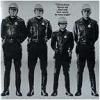| Checkman |
| (.333 member) |
| 15/03/08 02:30 PM |

|
|
|
Hello everyone. I've been lurking around nitroexpress for many months now. I don't own any double rifles and probably never will. But like many shooters I'm fascinated by them. Hope I can contribute something now and again. Like right now.
Take a look at "Out of Nowhere. A History of the Military Sniper" by Martin Pegler (Osprey Publishing 2004) . He addresses this topic in Chapter 4 on page 87.
Quote:
In 1914 and early 1915 the British were so short of artillery ammunition that such strongpoints could be used with impunity. The loopholes proved to be a real problem for the British, who had no means of defeating them. Moreover as the Germans gained experience, the plates so casually piled up around a trench gradually disappeared to be replaced by carefully inset shields, set well back in the parapet wall and often covered with sacking or other camoflauge. They were placed in enfilade, at an acute angle to the line of trenches, facing both left and right, giving an interlocking field of fire.
No ordinary .303 inch ball ammunition could penetrate the steel of the German sniper's shields, and while a good rifleman could put a bullet through an open loophole he had to be both quick and lucky. In a desperate attempt to deal with the German snipers, the British War Office purchased some 62 large bore sporting rifles for issue to marksmen: 47 of .450 calibre, four of .470 calibre, one of .475 calibre, four of .500 calibre, two of .577 calibre and four of .600 inch. Each rifle was inspected at Enfield prior to issue then marked with the War Department broad arrow. Some British officers supplied their own.
Mr. Pegler goes on to quote Stuart Cloete, sniping officer for the King's Own Yorkshire Light Infantry.
Quote:
We used a heavy sporting rifle - a 600 Express. These heavy rifles had been donated to the army by big game hunters and when we hit a steel plate we stove it right in. But it had to be fired standing or from a kneeling position to take up the recoil. the first man who fired it in the prone position had his collar bone broken.
Ouch. Mr. Pegler is or was the seniro curator of Firearms at the Royal Armouries Museum, Leeds UK. In the 1980's he interviewed many of the surviving (British) World War One veterans and those interviews are now part of the sound archives of the Imperial War Museum, London.
Once again hope this helped.